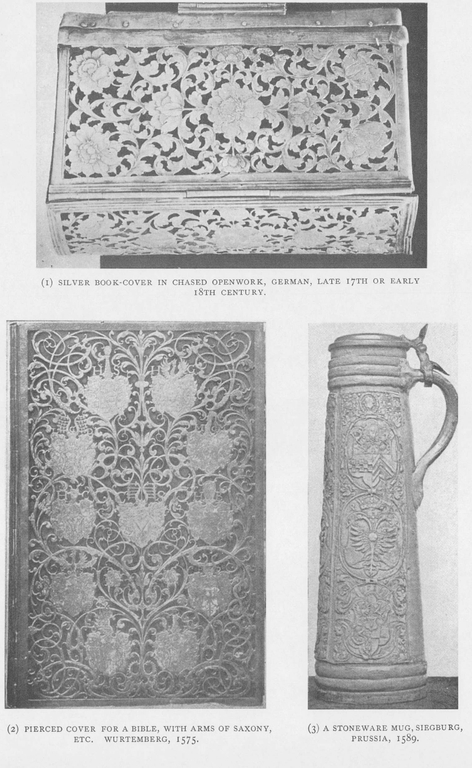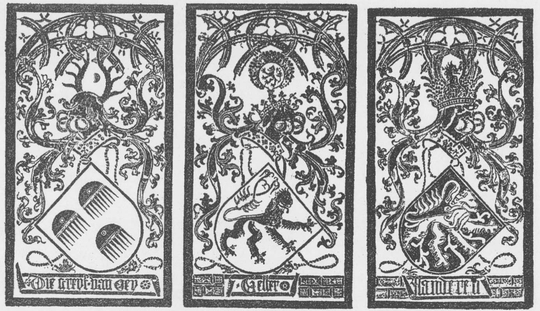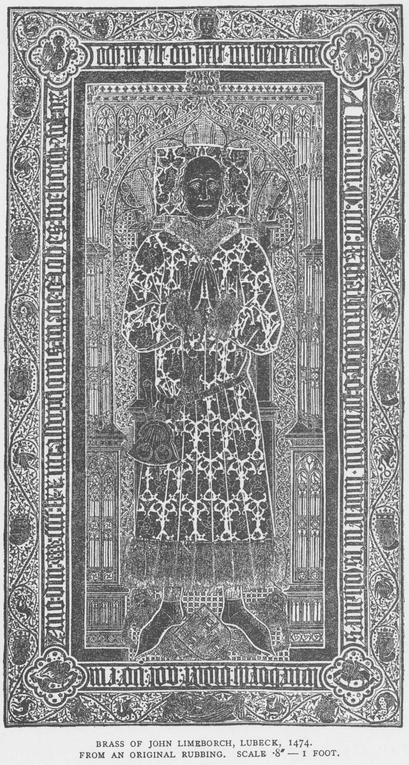Plate 66

HERALDIC ORNAMENT
Heraldry was, in its origin, severely practical. As during the course of the 12th century, the knight grew to be “ sheathed in complete steel,” it became important for him to bear distinctive and conspicuous marks by which he might be known to friend and foe alike. The earliest traces of Heraldry thus date from the 12th century, though the science was probably not reduced to a regular code till well into the 13th. The knight’s colours and armorial bearings were originally displayed upon his shield, surcoat, and horse’s trappings, and his crest above his helmet; but the men of the Middle Ages, quick to perceive the decorative possibilities of their devices, soon applied them to architectural ornament, furniture, books, plate, and even to garments.
Whereas the spirit of heraldry declined with the Middle Ages, its ingenious adaptation to the most varied objects throughout the 16th century, and even later, continually provoke our admiration. Heraldry, applied as an engraved, stamped, cut, or modelled decoration is, as countless examples go to prove, a genuine embellishment in its fit place. The skill with which Dürer has worked heraldic designs into his engraved compositions is especially noteworthy, and his contemporaries, Beham, Burgkmair, Weiditz, and many others, produced a volume of fine work in decorative heraldry.
It should be noticed that, down to the 17th century, when it was not feasible to render appropriate “tinctures” and “metals” by means of paints or enamels, colours were simply ignored. Various systems of hatching and cross-hatching were then introduced to express colour by black and white.

HERALDIC PANELS FROM THE BRASS OF JOHN I., DUKE OF CLEVES, circa 1481.
Plate 67
